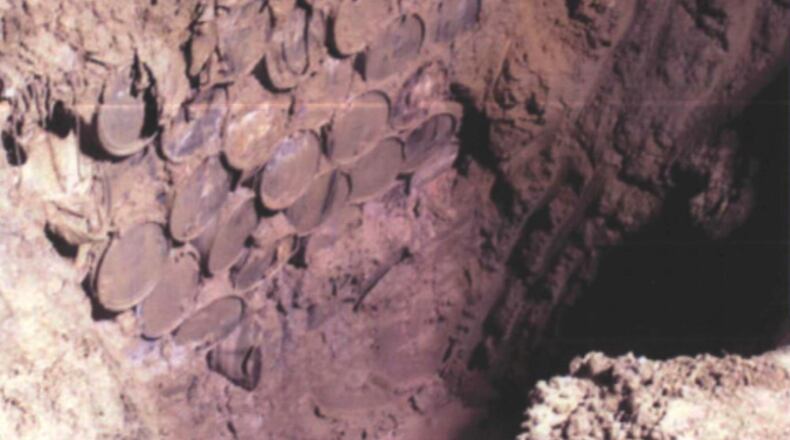The EPA outlined the agency’s Superfund Remedial Process that started in 1999. That’s when the EPA conducted an assessment of the 8.5-acre landfill site and subsequent feasibility study for clean-up.
A proposed plan to resolve concerns was submitted in 2011 and resulted in the negotiation of a Superfund Remedial Process involving the U.S. Department of Justice, EPA and Principle Responsible Parties (those companies that actively used the dump site). A federal judge issued a consent degree this year to finally move the process toward implementation. The court will have jurisdiction in enforcing remedial work and timelines throughout the effort.
Polster indicated all Superfund sites share the same requirements and model. She emphasized that the objective of all parties is to protect public health and the environment through the design and implementation of a remediation plan that is reviewed and assessed every step of the way by the EPA.
The process will include construction on site of a new environmentally safe container to house the solid waste currently located in the barrel fill. Liquid waste in the area will be collected and shipped offsite for treatment and disposal. Both points are critical in order to address concerns about potential contamination of the crucially important aquifer adjacent to the site.
The EPA presentation included photographs taken of the site during the assessment phase that clearly show stacks of barrels buried atop each other and others haphazardly dumped in the site.
Because implementation of the remedial design will involve additional risks, the plan also calls for development of an Emergency Response Plan to ensure safety throughout the process.
Commissioner David Estrop observed, “As we meet today, we have no sense of the condition of the barrels contained in the landfill. We don’t know what we will discover, and we need to make sure it doesn’t result in a bigger problem.”
Polster said, “The design should anticipate every possible condition we might encounter in uncovering the area.”
Long-term, continuing EPA monitoring once work is complete will involve “robust review to ensure the remedy is continuing to meet specifications,” according to Polster.
The EPA plans for public meetings and will issue fact sheets periodically as work progresses to keep residents informed.
The cost of the estimated $27.7 million cleanup will fall on the Principle Responsible Parties who owned or used the site to dump 51,500 drums and 300,000 gallons of industrial waste at the between 1976 and 1979. These include Chemical Waste Management Inc., Franklin International Inc., International Paper Co., Procter & Gamble Co., PPG Industries Inc., Strebor Inc. and Worthington Cylinder Corporation.
Prior to the EPA presentation, city commissioners acknowledged the importance of long-term community activism in elevating the issue and proactively seeking government action. Commissioner Kevin O’Neill recalled that Martin Cook, a leader of the Citizens For Water (CF Water) community group appeared at his first meeting after he joined the commission in 1992.
CF Water questioned the safety of the site, pressuring local, state and federal officials to consider the consequences of contamination of the Buried Water Aquifer source essential to Springfield. The work started decades ago by CF Water continues today to be championed by People for Safe Water, whose members attended the EPA presentation and were recognized for their continued commitment to ensure a safe water supply.
People for Safe Water spokesman Larry Ricketts cited EPA monitoring locations as a major factor in ensuring the water supply is safe.
“Based on the geology, we think there are locations for monitoring that will tell us if it remains effective in holding contaminants. We hope that the EPA will allow us to have input along with their technical advisors” Ricketts said.
That is possible, because the plan calls for community involvement and allows for community representatives to access consultants with appropriate expertise to advise on related technical and environmental concerns as needed.
County Health Commissioner Charles Patterson expressed appreciation to People for Safe Water and local, state and federal political representatives for helping to move remediation forward. He noted that for the last year and a half, the EPA has been in frequent contact and said upcoming meetings, including a December session, will help sustain the momentum.
“There’s still a ton of work left to do,” he said.
The extensive work still to be completed extends the start of actual on-site work at the Tremont City Barrel Fill to 2025. However, the timeline does include several specific steps to be completed from 2023-2025.
| Description of Deliverable,Task | Legal Deadline Under Consent Decree | Rough Estimated Delivery Date |
|---|---|---|
| Pre-Design Investigation Work Plan (PDIWP) (including Field Sampling, Health and Safety and Quality Assurance Plans) | Begins 45 days after Court order is effective with EPA Authorization to Proceed for Supervising Contractor | November 18, 2022 WHERE THINGS STAND TODAY |
| Pre-Design Investigation Field Work | As identified by the PDIWP | Winter/Spring 2023 |
| Pre-Design Evaluation Report | As identified in the approved PDIWP | Summer 2023 |
| Remedial Design Work Plan (RDWP) Including Emergency Response Plan | 45 days after EPA approval of Pre-Design Investigation Evaluation Report | Fall 2023 |
| Preliminary Remedial Design including Operations and Maintenance Plan and Manual, Health and Safety Plan, Field Sampling Plan and Quality Assurance Project Plan (30% complete) | 90 days after EPA approval of Remedial Design Work Plan or approval of Pre Design Investigation Evaluation Report | Fall 2023/Winter 2024 |
| Pre-Final Remedial Design (90-95% complete) | 90 days after EPA comments on Preliminary Remedial Design | Summer/Fall 2024 |
| Final Remedial Design (100%) | 45 days after EPA comments on Pre-final Remedial Design | 2025 |
About the Author

